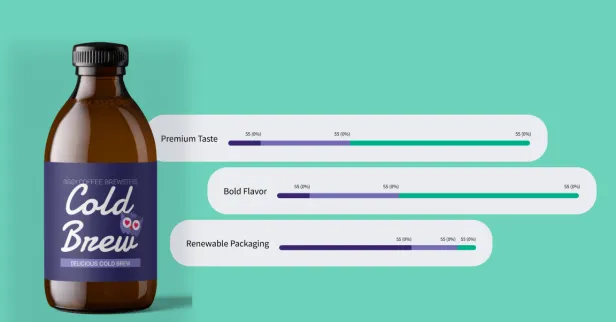Whether you are a start-up or a global consumer goods company, launching a new product can be daunting. So, having a strategy in place, grounded in best practices and backed by data and insights is crucial for risk mitigation and overall success.
Having a product launch strategy is vital because it sets the tone for how a product enters the market, generates sales momentum, and helps establish positioning and brand identity.
A well-planned launch strategy can mitigate risks and increase the likelihood of long-term success by laying a solid foundation for ongoing marketing and sales efforts.
What does it take to launch a new consumer product?
Initial market research
Identify target demographics, assess competition, and understand consumer needs and preferences. Is there a market or need for your product?
Product Development
Which comes in two flavors:
![]() Quantitative research, getting feedback from existing and or potential customers, for designing and testing packaging, logos, slogans, heatmaps, attribution testing, and other techniques depending on the product
Quantitative research, getting feedback from existing and or potential customers, for designing and testing packaging, logos, slogans, heatmaps, attribution testing, and other techniques depending on the product![]() Physically building prototypes and testing to ensure quality and functionality.
Physically building prototypes and testing to ensure quality and functionality.
Branding and Positioning
Develop a unique brand identity and positioning strategy that resonates with the target market.
Pricing Strategy
Determine the pricing strategy based on willingness to pay, production costs, competitor pricing, or perceived value.
Marketing Plan
Develop a comprehensive marketing plan, including advertising, promotions, public relations, and digital marketing. Testing slogans and taglines with prospects to find what resonates the most.
Package Design
Design attractive, functional packaging that aligns with the brand identity and works well with the marketing collateral.
Feedback Collection
Implement systems to collect customer feedback post-launch to identify improvement areas and iterate on the product.
Continuous Marketing and Support
Continue marketing efforts to maintain momentum and provide ongoing customer support to address issues or concerns.
Monitoring and Analysis
Monitor sales performance, market trends, and customer feedback to make informed decisions and adjust strategies as needed.
Depending on your product and the market dynamics, you may also need to consider things like distribution channels, regulatory compliance, inventory management, perhaps a launch event, and sales training if warranted.
Why is market research so important in your go-to-market strategy?
Well, it informs most of the list above and many essential things to consider after launch. Market research is crucial for new product launches for several reasons:
Understanding Consumer Needs
Gain insights into what consumers want and need. By understanding their preferences, pain points, and behaviors, businesses can develop products tailored to meet those needs.
Identifying Target Demographics
Identify your target audience. Businesses can tailor their marketing efforts and product features to resonate with specific consumer groups by segmenting the market based on demographics, psychographics, and other factors.
Assessing Competition
Analyze competitors' products, pricing strategies, marketing tactics, and positioning in the market. This information helps businesses identify opportunities for differentiation and competitive advantages.
Evaluating Market Potential
Assess the size, growth potential, and dynamics of the target market. This information is crucial for estimating demand, forecasting sales, and determining the feasibility of launching a new product in a particular market.
Minimizing Risks
Minimize the risks associated with launching a new product. By gathering data and insights beforehand, businesses can make more informed decisions about product features, pricing, distribution channels, and marketing strategies, reducing the likelihood of failure.
Optimizing Marketing Efforts
Insights into consumer preferences, media consumption habits, and communication channels all need to work in sync. This information helps organizations develop effective marketing campaigns and allocate resources more efficiently to reach their target audience.
Market research and consumer insights are essential for ensuring the success of new product launches by guiding product development, marketing strategies, and decision-making processes based on data-driven insights and understanding of consumer behavior.
Product Development Research with SightX
SightX is an AI-driven market research platform offering a single unified solution for product, brand, marketing, and pricing research. While powerful enough for insights teams at Fortune 500 companies, our user-friendly interface makes it simple for anyone to start, optimize, and scale their research.
And with our new Generative AI consultant, Ada, you can harness the power of OpenAI's GPT to transform your marketing research and insights. Collaborating with Ada is like having an expert researcher, brilliant statistician, and ace marketer on your team, helping you ask the right questions, choose the best experiments, pick out key insights, and seamlessly apply them to your business.
